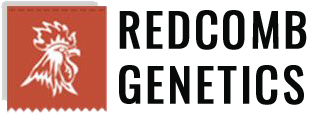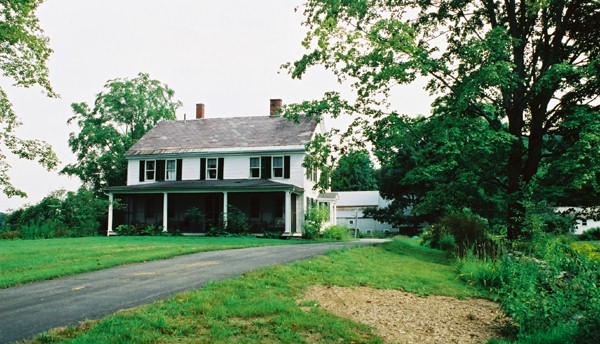The Hubbard homestead in 2000
Hubbard Farms Inc can trace its origins back to 1791 when Levi Hubbard settled in Walpole and built a homestead on Old Drewsville Road. In the early 1900’s his great-grandson Ira ran a general produce farm, Maple Hill Farm, there with the help of his three sons, Oliver, Austin and Leslie. In 1914 Ira decided to raise a small number of chickens and built the first chicken house. The following year Oliver bought two cases of New Hampshire hatching eggs and hatched chickens in the cellar of the homestead. These chickens were to be a vital link in the development of the farm business. Oliver attended the New Hampshire Agricultural College and studied poultry production under the A.W. “Red” Richardson. He was teaching new methods of commercial poultry-raising. At the time pullorum was decimating flocks of chickens. A test was developed at Harvard University to identify the bacteria. In testing flocks around New Hampshire Professor Richardson found only five flocks were free of Pullorum, one of which was the flock hatched in the Hubbard cellar. This was the key to getting the poultry business started. The general picture of Pullorum around farms at the time was that it caused up to 75% mortality. Oliver graduated in 1921 with a degree in agriculture and was determined to start a commercial poultry business. With a flock of 1000 pullorum free birds they produced about 10,000 in the first year. A customer in Hudson, Massachusetts lost only 12 from a delivery of 750 in the first 10 days. The Hubbard’s quickly gained a reputation for selling chicks that would survive. In 1924 they sold 30,000. The following year the farm name was changed to Hubbard Farms with Ira S Hubbard and Oliver J Hubbard as proprietors. Broiler growing was confined to the warm half of the year as winter chicks developed rickets. However Dr Halpin head of poultry at Michigan University discovered that cod liver oil mixed with chicken feed prevented rickets and in 1926 the farm produced and sold 200,000 chickens throughout the year. In 1931 the business was incorporated and started giving technical management assistance and hired Floyd Smith to become the industry’s first technical advisor. Over the next decade the company initiated trapnesting to accelerate progress in breeding and was at the forefront of innovation in the broiler industry. A white feathered broiler was introduced in 1955 replacing the New Hampshire Red and Barred-Cross lines. In the 1950’s they diversified into egg breeders and obtained a franchise for the Kimber Leghorn and developed an egg production strain of the New Hampshire. A dual purpose White Cross was also marketed. The company expanded in to Europe in 1962 with the establishment of Hubbard Europa in Belgium and was the base for sales development throughout Europe, the Middle East and Africa.
The 60’s and 70’s was the period when feed manufacturers and pharmaceutical companies purchased breeding companies and Hubbard was the target in 1974 of Merck and Co. Hubbard were now selling broiler parent stock as a package (not a normal practice in the industry at the time when either a male or a female was sold and integrators purchased their preferred parents). The autosexing Golden Comet sold well throughout Europe when the market was changing from white to brown eggs.
Hubbard expanded into turkey breeding in 1978 with the purchase of British United Turkeys based in Cheshire. This company established itself in the US and Canadian market in 1982. In 1988 the broiler genetics program produced the high yield female HI-Y which in 8 years became the leading broiler mother in the USA.
In 1997 Institute Merieux, the Animal Health Division of Rhone-Poulenc, merged with the Merck and Co subsidiary MSD AgVet to form the largest poultry breeder organisation. Merieux was at the time the owner of ISA, Shaver and Babcock brands.


